Why Is Food Safety Important In Healthcare? Healthcare Leaders Guide
Learn challenges healthcare foodservice teams face today and key food safety practices to protect vulnerable patients. Get a free healthcare leader...
Butter is generally a stable product but still has a limited shelf-life.
Butter is a common ingredient in baking recipes. This ingredient is generally stable but is not exempt from contamination. When in unfavorable conditions, butter can spoil faster than its indicated sell-by date. Butter can withstand a lot of different conditions, and food handlers must be aware of how long can butter sit out in these conditions.
In the food service industry, there are different kinds of butter - spreadable butter, salted, unsalted, pasteurized butter, and more. As part of your approach to food safety, you and your team need to understand how to handle butter and related products.
WHAT WE'LL COVER:
In this section, we will also discuss the following topics:
Fresh butter is a type of food that is made out of dairy fat and milk proteins. In general, butter has a very low moisture content. This fact makes butter safe to sit out at room temperature for a maximum of 1 to 2 days. Despite this fact, food handlers must know how long can butter be left out.
The U.S. Department of Agriculture (USDA) specifically suggests that food handlers should just take out the projected amount to be used and leave that at room temperature for immediate use.
Different types of butter may have varying stability at room temperature. In general, butter with natural or artificial preservatives will last longer at room temperature. This is also the base for kinds of butter with low moisture content.
If you leave out butter at room temperature for too long, it can go rancid. This phenomenon will change the taste and smell of the food item, making it unacceptable for food preparation or serving.
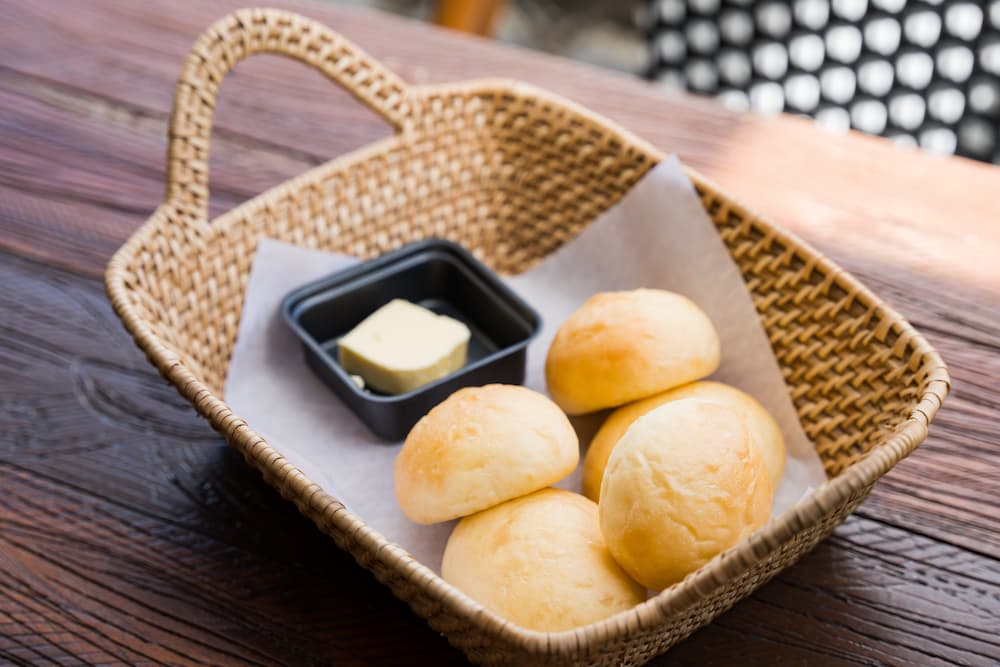
When food handlers leave butter at room temperature, the food item is exposed to external factors that may put its quality and safety at risk. Without proper protection from food safety hazards, butter can easily become contaminated.
Below are some examples of hazards that can potentially contaminate butter exposed to room temperature.
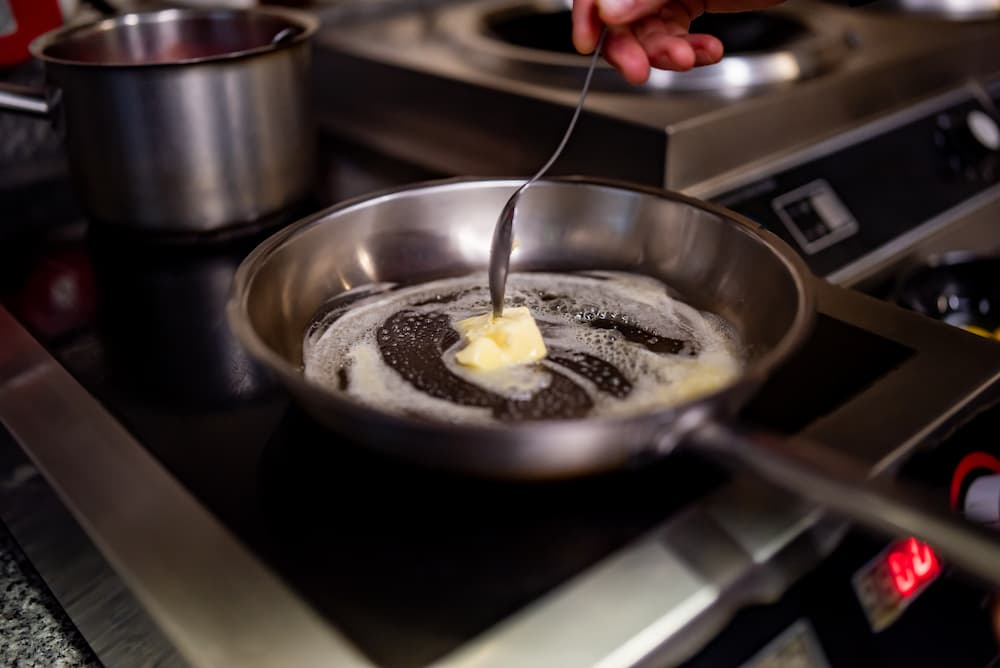
Butter becomes at risk when exposed to room temperature for an extended period of time. Some types of butter are actually considered high-risk foods. This means that they require strict time and temperature control for safety. Exposing them to room temperature, which is well within the temperature danger zone, can significantly increase the chances of contamination.
Unsalted butter is generally less stable than other varieties of butter. That being said, it is perfectly fine to leave unsalted butter at kitchen temperature for a maximum of 2 days. Beyond this period, unsalted butter can turn rancid and produce off-flavors.
Unsalted butter has a higher water content than salted butter. This makes it more prone to contamination and is more likely to spoil or turn rancid. The best way to prolong the shelf-life of unsalted butter is to refrigerate it and only take out the amount that you need.
Salted butter is a more stable form of this product. The added salt in the butter acts as a preservative by inhibiting pathogens and restricting water activity. This means that pathogens cannot use the available water for their biological process.
When protected from contamination, salted butter can sit at room temperature for a maximum period of 7 days. Although, remember that this is only an estimation of its safety. Salted butter is still prone to cross-contamination, cross-contact, and other forms of food safety hazards.
Peanut butter is low-risk food. This product can be left at room temperature for six to nine months, provided that it is unopened. Once opened, its shelf life reduces to two to three months if left at room temperature.
When refrigerated, peanut butter can last for almost one year. The shelf stability of peanut butter is attributed to its very high-fat content and low moisture. This condition is generally unacceptable for bacterial growth.
Buttercream is the product of mixing butter and powdered sugar together. If left sitting at room temperature, buttercream can stay safe for consumption for up to two days.
Leaving buttercream at room temperature can significantly affect its consistency and texture. When refrigerated, buttercream can last for up to a month.
Use our free Food Expiration Dates Chart at FoodDocs to guide your employees on the acceptable shelf-life of different products in your business. To level up your food safety compliance system, manage your food expiration dates digitally with FoodDocs Food Safety Management System. You can try it for free for 14 days.
The shelf-life of butter generally depends on several different factors. The type of butter matters when it comes to maintaining food safety. One type of butter can stay safe for consumption over another in the same conditions.
Sealed, unopened butter can last the longest at room temperature. When the product is fresh and unopened, it can last for up to a month past its indicated shelf-life date. Unopened butter can last up to three months inside the refrigerator, whereas it can last up to a year in the freezer.
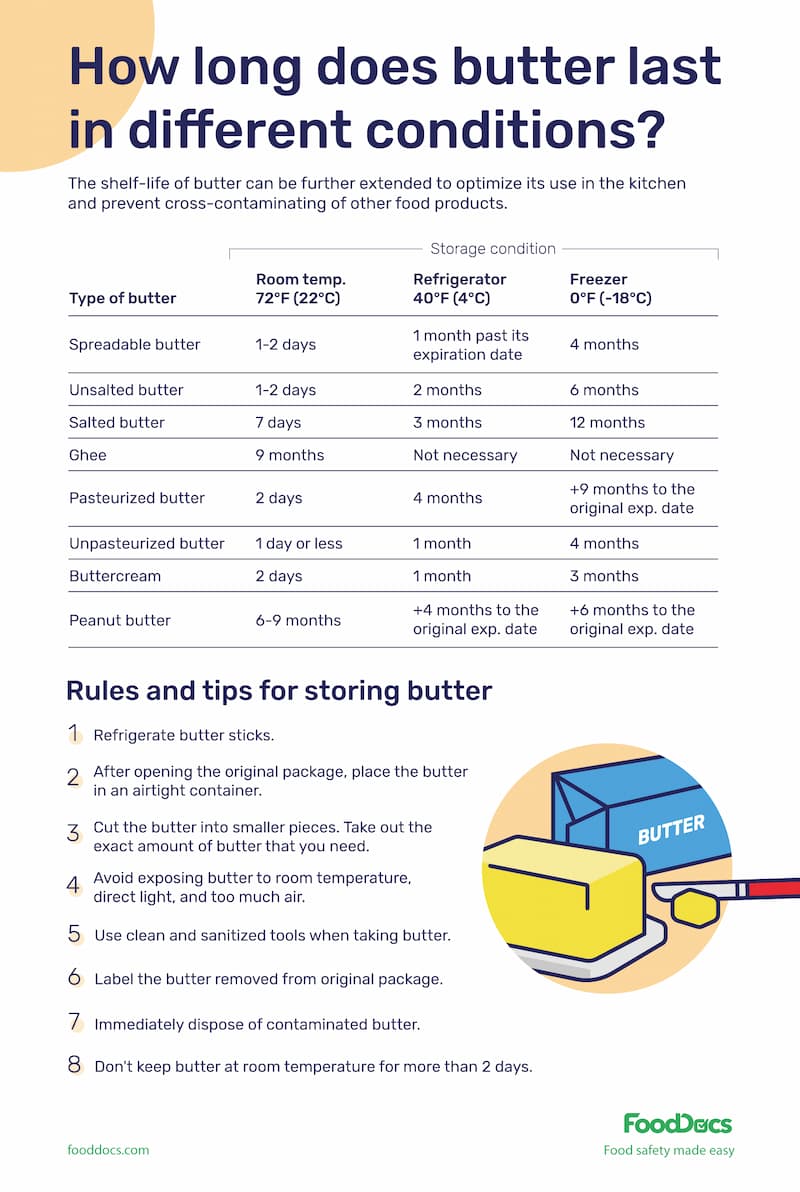

Thank you for downloading Food product specification sheet!
Want to get a customizable HACCP template?
Or set up your food safety system in 15 minutes?
Once the butter is opened, it is exposed to external factors. The shelf-life of the product is then shortened to about one to two weeks in the refrigerator and only a maximum of two days at room temperature. To help further prolong the shelf life of butter at room temperature, it can be kept in an airtight container or covered dish.
Other types of butter, such as clarified butter or ghee, can last longer than regular butter. Ghee is a type of butter that has been boiled to remove all water. It also has less lactose than butter, making it highly unfavorable for the growth of pathogenic microorganisms. When unopened, ghee can last for almost 9 months at room temperature. Opening the package reduces its shelf-life to 3 months. When refrigerated and unopened, ghee can last beyond one year.
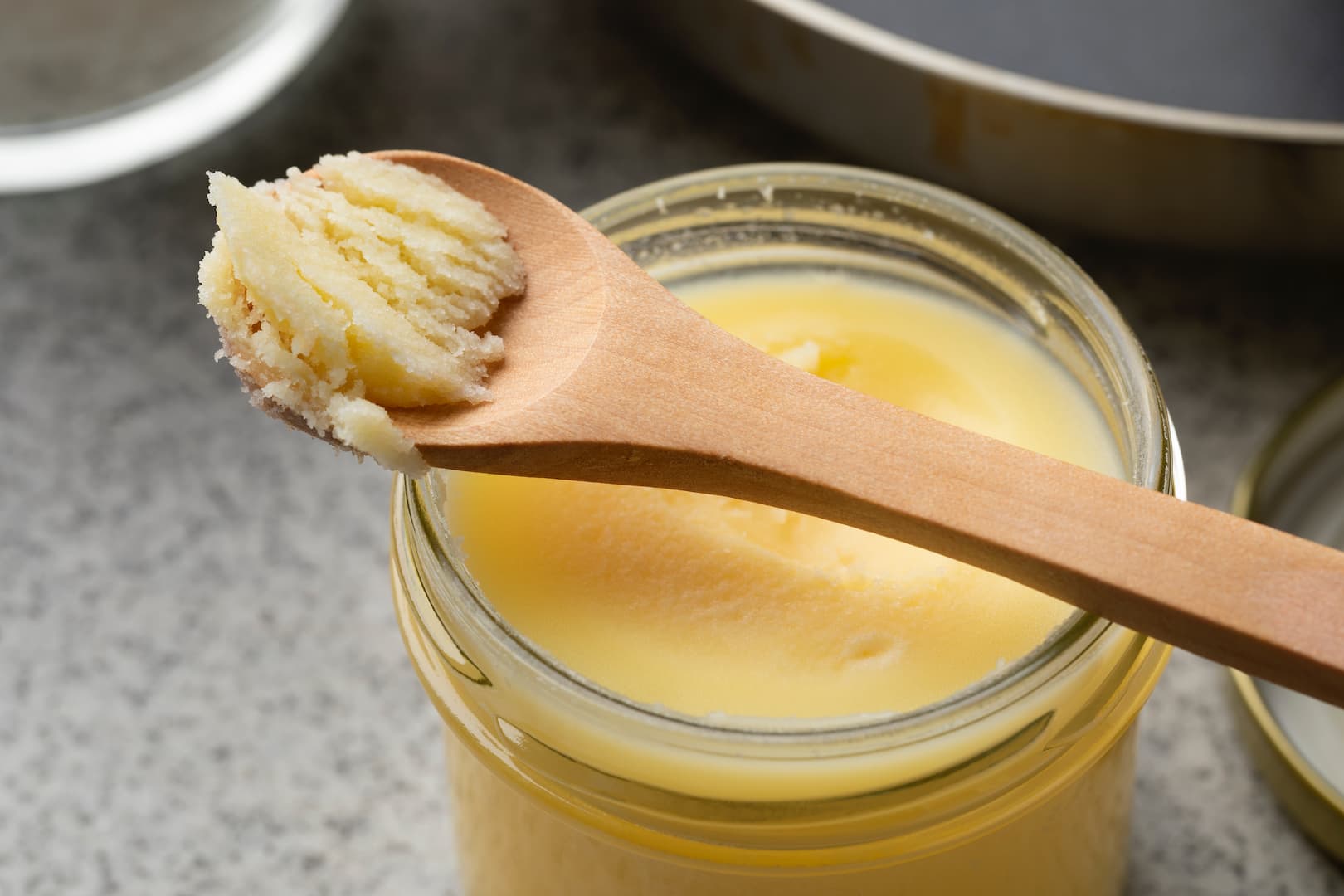
Another factor that can affect the shelf-life of butter is if it has been added with spices or other preservatives. Salted butter can last longer than unsalted butter. Despite this, both types can still be spoiled when in unfavorable conditions.
Spoiled or rancid butter may show signs of spoilage. Some of these signs include changes in its physical properties. The color of butter can significantly change, black spots or molds can grow on its surface, and the butter can form a rancid flavor.
The key to prolonging the shelf-life of butter is proper storage and constant monitoring. Like any other perishable food, butter can be contaminated, which will speed up the process of food spoilage.
If food handlers remain attentive and maintain proper storage conditions, butter and other food ingredients can last longer. Use our smart Food Safety Management System that comes with a Traceability System to monitor and track the shelf-life of your current supply. Stay on top of your product's conditions and ensure that your team is only using the freshest ingredients.
In this section, learn more about the proper storage of butter and the following topics:
Butter is generally shelf-stable. Despite this, it can still be contaminated and spoil faster than intended. Foodborne illness outbreaks from consuming contaminated butter have been reported in the past.
Food handlers are responsible for storing and monitoring the shelf-life of foods in the kitchen. This will help ensure that all foods served in your business are safe and will not cause any foodborne illness.
Here are some butter storage tips for your team.
Proper storage is a critical part of maintaining food safety. Butter, although stable, is not exempted from contamination and food spoilage. The shelf-life of butter can be further extended to optimize its use in the kitchen and prevent cross-contaminating of other food products.
Use our free Proper Food Storage Chart to help train food handlers about the best conditions for storing food products.
Butter is a relatively stable food product. If butter is a staple ingredient in your kitchen and is a fast-moving commodity, it is generally safe to keep it at room temperature. However, keeping butter refrigerated can protect it from biological and chemical spoilage.
Butter is made from milk and is considered a dairy product. The only reason why it is not considered a high-risk product is because of its very low moisture content. However, overexposing this product to air, water, heat, and light can lead to rancidity and spoilage.
Proper butter storage will make it harder to spread and use, but it will prevent hazards from contaminating the product.
As mentioned, unopened butter can last in the fridge for up to three months. When opened, the butter must be used within two weeks of refrigeration.
When refrigerating butter, ensure that it is enclosed in an airtight container. This will prevent the butter from absorbing any unwanted flavors and potential cross-contamination inside the fridge.
In this section, read about how can the following topics on freezing help preserve butter:
Yes! Butter is freezer-safe. In fact, freezing a butter package is the most effective way to preserve its safety for the longest time. Frozen butter can stay safe for consumption for approximately one year.
When freezing quantities of butter, food handlers must take note of some critical steps. The butter must be tightly packed to keep it away from unnecessary moisture. Ice crystals around the frozen sticks of butter will melt at a higher temperature, ruining the texture of the butter.
Like any other frozen food, food handlers should properly thaw butter to avoid spoilage. Prolonged freezing can also sometimes affect the overall quality of butter. Depending on the type of butter, it can become crumbly upon freezing.
Freezing butter is only advisable for butter that is not shelf-stable, such as unsalted or unpasteurized butter.
Butter can stay safe for consumption inside the freezer for up to 6 to 12 months. The product must be properly sealed in an airtight container to exclude external factors.
While butter's shelf-life can be extended by freezing, its quality may degrade the longer it stays in the freezer. When improperly packed, butter can get quality issues, such as freezer burn, which can affect its quality.
Thawing butter requires a gradual process to prevent it from spoiling. Butter becomes hard to manage when it is frozen. As such, food handlers will sometimes need to thaw it before using it.
One of the safest methods to use how to thaw frozen butter is to place it in the refrigerator for hours before taking it out to room temperature. This process will allow the butter to gradually soften without exposing it to optimal temperatures for bacteria.
Another method that you could use to thaw butter is to grate it or portion it to desired sizes. A block of butter will take more time to thaw than pieces of it.
Lastly, food handlers can microwave the butter if they are in a hurry. The problem with microwaving butter is it could melt into a liquid state, making it harder to use. When microwaving butter, heat the product in short intervals to manage the thawing process.
Monitoring the shelf-life and status of your ingredients is a continuous and critical task for any food business. This task is a part of the everyday routine of every food handler and must always be performed with precision. In an actual setup, food handlers do not just need to monitor butter. There are hundreds of ingredients to monitor.
To help you monitor the shelf-life of your products and the safety of your operations, what you need is a smart solution. Use FoodDocs' smart Food Safety Management System to keep track of your operations in the most efficient and intuitive way.
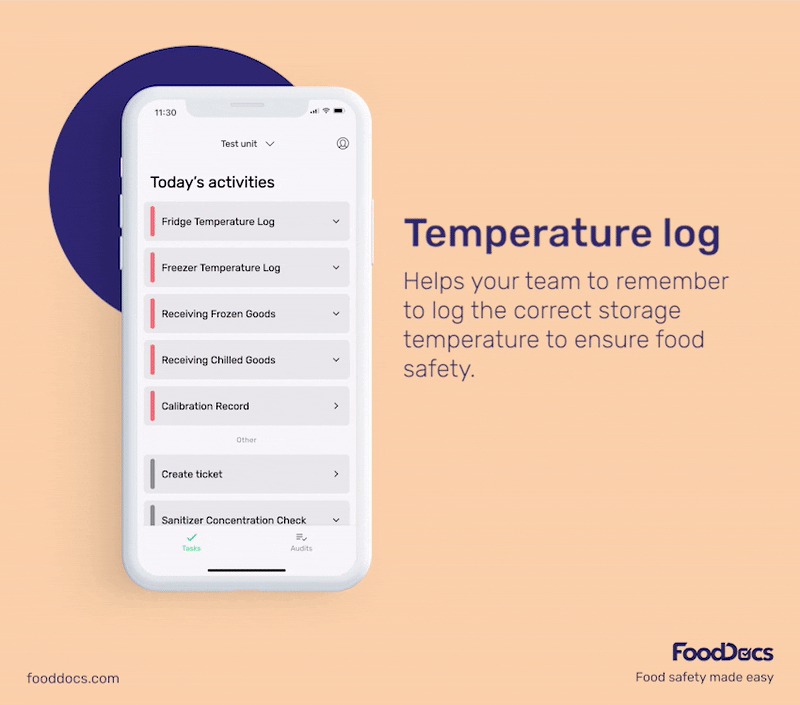
When you use our smart software, you can get the following benefits and features:
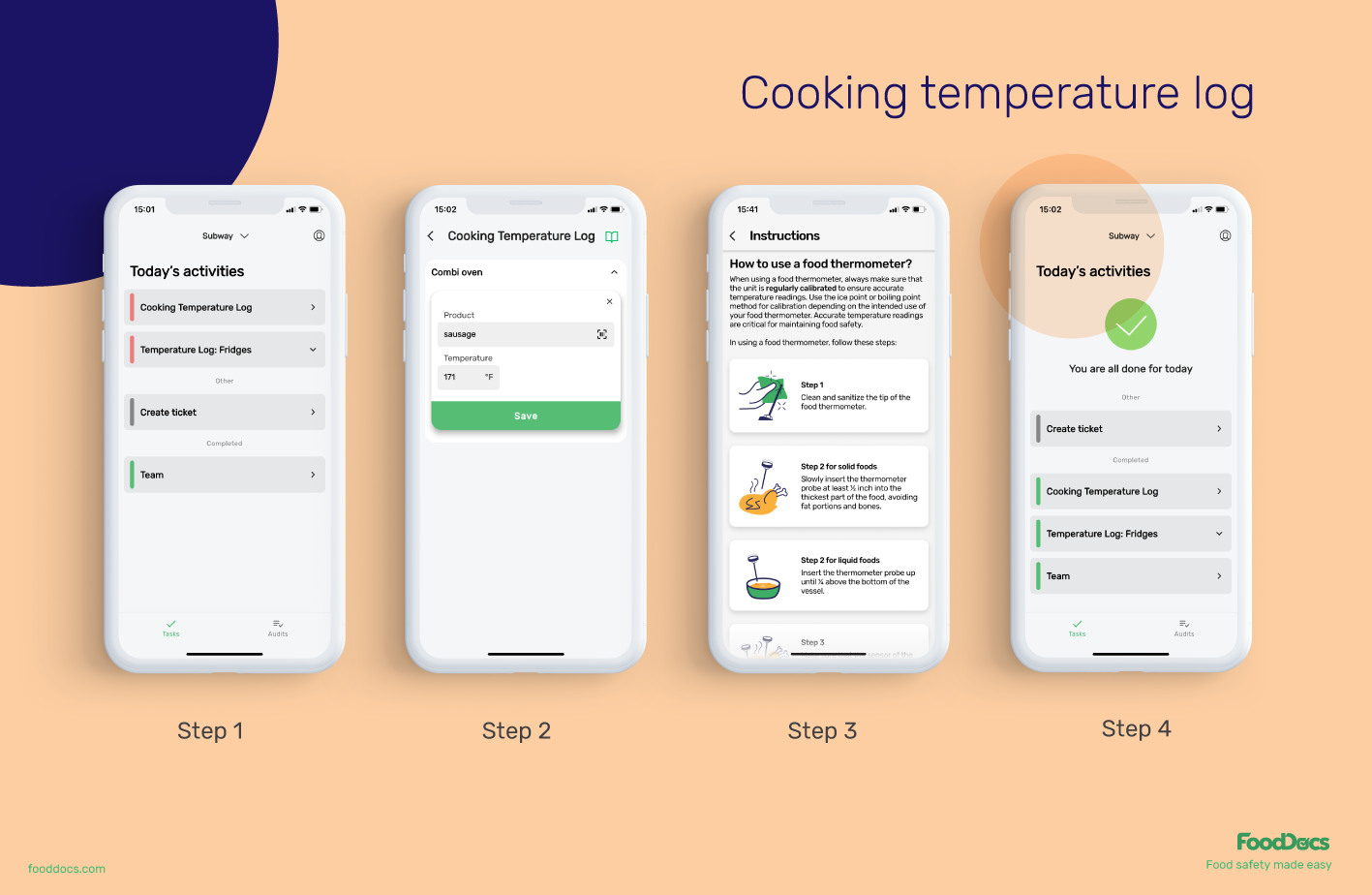
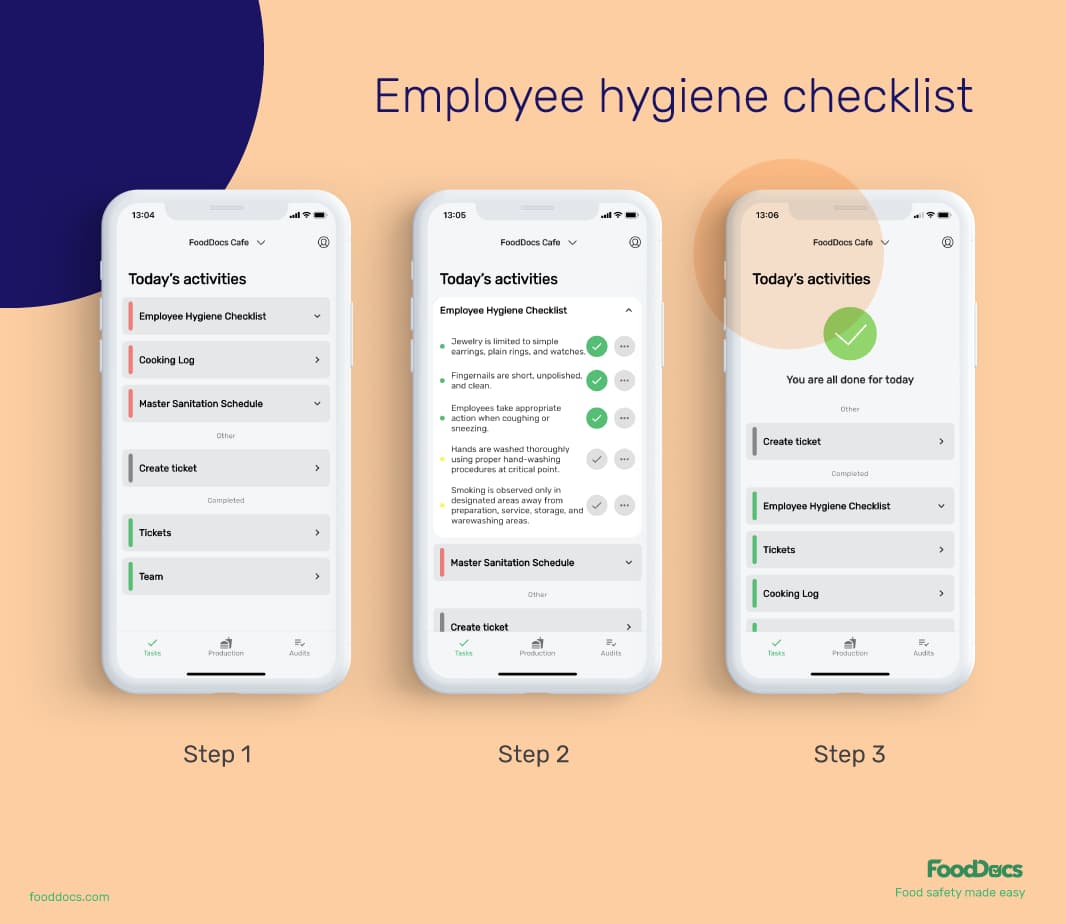

In addition to features that will help employees monitor tasks and product shelf-life, our smart software can also help managers improve work efficiency.
Ensure that all of your ingredients and products, not just butter, will always stay safe for consumption with our smart solutions. Customize all monitoring logs and food safety documents from our system with just a few clicks.
Use our smart Food Safety Management System to protect your consumers from potential foodborne illnesses. Start your digital food safety journey with our free 14-day trial.
Do you have more specific questions about handling butter? Here are some frequently asked questions about this topic.
The U.S. Department of Agriculture advises that butter can be left at room temperature for a maximum time of two days. Beyond this time frame, the chances of food spoilage and contamination significantly increase.
Butter will eventually spoil at room temperature. The process is slower than for high-risk foods, but it will spoil at some point. Butter is a product with very high-fat content and very low moisture. These conditions make it unfavorable for microbial growth.
A butter dish or a butter crock can protect the butter from food safety hazards, and it can keep butter fresh for up to two weeks.
Yes. If the butter was handled and stored properly, it could be placed back into the fridge. This process will extend the shelf-life of the product for another week or two.
Learn challenges healthcare foodservice teams face today and key food safety practices to protect vulnerable patients. Get a free healthcare leader...
Learn what Standard Operating Procedures (SOPs) are and how to write effective SOPs that ensure consistency, efficiency, and safety in your...
Boost your retail food safety with essential practices and digital tools to protect customers and your brand. Plus a free Retail Food Safety Leader...